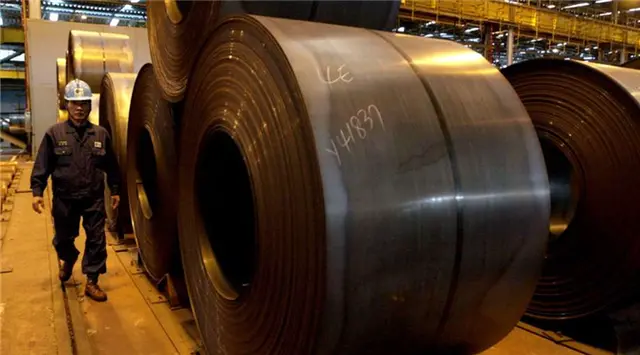For years, due to its steel exports, China has been the "dumping scapegoat" of the United States, a convenient excuse for the country to impose anti-dumping tariffs to protect its own sluggish steel industry.
Thus it's not surprising to see that the U.S. Commerce Department ruled on Tuesday that the cold-rolled steel flat products from China sold in the United States are "dumping," paving the way for possible punitive anti-dumping tariffs.
However, such protectionist measures won't help solve the overcapacity the U.S. steel industry is suffering from, as they don't address the core of the problem.
The slow recovery of the world economy has been causing a sluggish demand for steel products, which has led to overcapacity in the steel sector.
Under the impact of a weak global economy, China's steel industry is itself suffering from the problem of excess capacity. However, instead of dumping steel on other countries, the Chinese government and Chinese steel companies have been making tremendous efforts to cut obsolete capacity and expand domestic demand for steel products.
China has so far cut over 90 million tons of obsolete capacity during the 12th Five-Year period, and plans to slash 100-150 millon tons of crude steel production capacity over the next five years.
On the demand side, China has taken a lot of measures such as embarking upon necessary large-scale infrastructure development projects to absorb more steel. China's Belt and Road Initiative which foresees strengthening connectivity and infrastructure development of countries along the route will also fuel demand for steel.
Moreover, rather than dumping steel in other countries, the Chinese government has in recent years implemented measures such as export tariffs on some steel products to reduce exports. The export tariff for billet is 20 percent and for hot-rolled wire rod 15 percent, said Zhang Ji, China's assistant commerce minister.
In reality, Chinese steel products make up a tiny part of U.S. and European Union (EU) steel imports. As a major producer and consumer of steel, China's steel products are mainly for domestic use.
"In recent years, 85-95 percent of steel produced by China have been for domestic consumption. China's annual steel consumption accounts for 45 percent of the global total," Zhang said.
China used to be a net importer of steel before 2005 and is still the fifth-largest importer of steel in the world.
"China imported the equivalent of 13.57 million tons of crude steel in 2015," Zhang said, adding that China has thus contributed to the stable development of the global steel industry.
The high cost of manufacturing has made the U.S. steel industry less competitive in the global producing market. Amidst fierce competition of global steel producers and a weak demand, the high costs of raw materials, labor and other factors have squeezed the profits of U.S. steel makers, especially in the normal- or low-end steel category.
To walk out of the predicament and garner more profit, all steel manufacturers need to make structural adjustments by investing more in technological research and developing high-end steel products.
In the past decade, the United States and many European countries have benefited from China's exports and imports. American and European companies chose to set up factories in China to lower manufacturing costs, yet now they refuse to accept the consequences of overcapacity.
The steel excess capacity has become an acute global challenge. Seeking a solution by resorting to trade protectionism and slapping tariffs on some scapegoat countries would bring nothing but a Pyrrhic victory, which will finally undermine the win-win cooperation between the world's two largest economies.
China has repeatedly urged the United States to abide by its commitment against trade protectionism and solve trade disputes through dialogue and cooperation with China.
China will also take enforcement actions against the United States under the World Trade Organization (WTO) dispute settlement framework to urge the latter to stop illegal anti-dumping activities.
(APD)
 简体中文
简体中文





